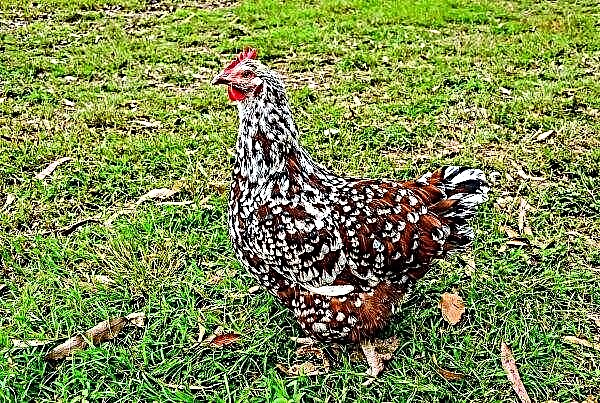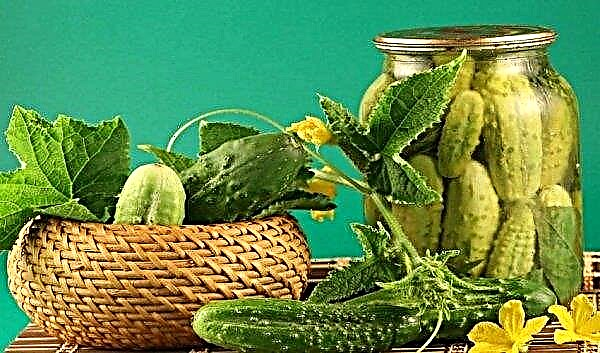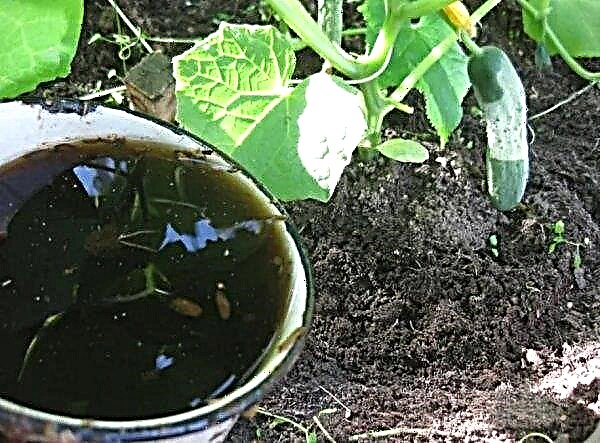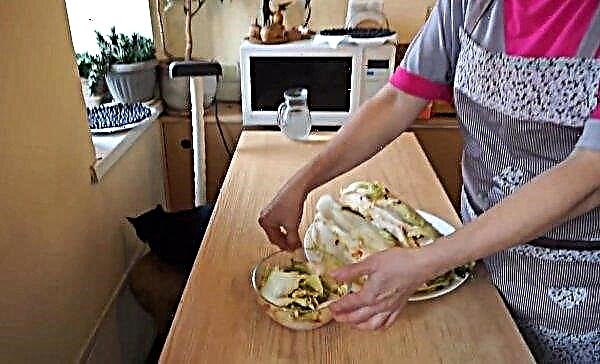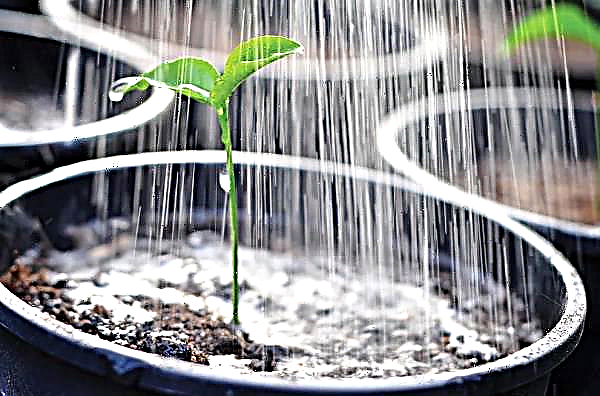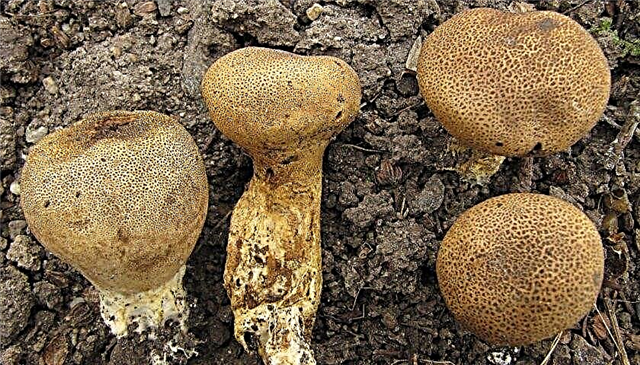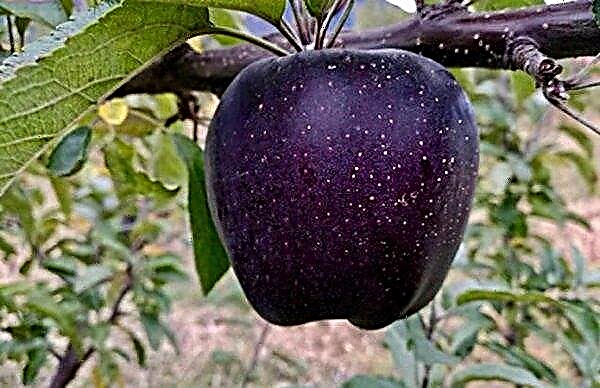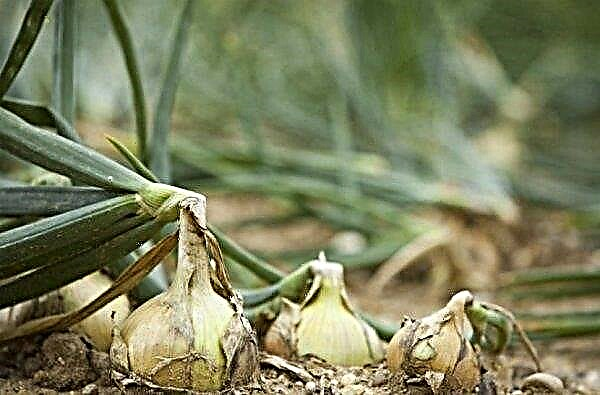Regardless of where the potatoes are grown, periodically you need to spud it. This procedure stimulates root growth and root production. In addition, the depth and lack of light improves the taste of tubers. How to properly spud potatoes will be discussed in this review.
What is the purpose of hilling potatoes?
The answer to the question of why it is necessary to spud potatoes lies in the peculiarities of the formation of root crops. Roots form around the trunk, and the longer its length in the ground, the more roots. Do I need to deepen the trunk into the ground to get a large area for the formation of roots? Yes.
Technically, the formation of root crops is similar to a building with several floors. First, tubers formed on the lower tier. A growing embankment from the ground creates the conditions for the formation of the next "floor", increasing productivity.Important! Proper hilling will yield a harvest of 10–14 full-sized tubers under each bush, and without the procedure, the yield will be 6–7 potatoes.
Whether the crop is rich depends on the nutrient content of the soil. The depleted soil does not have enough nutrients to form tubers. Therefore, the ovaries are small, and each does not even grow to the size of a chicken egg. Hilling is often combined with weeding to remove weeds and retain more nutrients for potato development.

Potatoes grown close to the surface of the earth and receiving too much sunlight “burn out” and acquire a characteristic greenish tint. It is solanine, a plant poison toxic to humans and animals. Therefore, it is also necessary to spud potatoes to prevent the formation of toxins in its peel.
Why does potato yield increase after hilling?
Find out also

A tuber is a thickened part of the root. The formation of tubers contributes to the nutrient soil and the height of the embankment. The higher the hill from the ground around the bush, the more potatoes you will receive in August. Growing on depleted soils gives rise to the idea of the futility of the method due to the small number of potatoes that are forming.
Opponents of the procedure claim that in hot weather the earthen mound overheats. Indeed, at temperatures above + 27 ° C, tuber formation ceases. But the topsoil will be warmed up by the sun regardless of the form that it has. And applying on top of it mulch can retain moisture after watering and prevent overheating.
There are no scientifically proven facts of the harm of hilling. Which of the points of view should be adhered to, each farmer decides individually.
When and how many times do you need to spud potatoes?
Potatoes are planted in the ground in March. The exact date depends on the climatic conditions of the region. When the emerged sprouts reach a height of 15–20 cm, they carry out the first hilling. Some farmers hold it so that only the top leaves remain on the surface.

The next is 3 weeks after the first. And then the procedure is repeated monthly, while tuber formation will continue. Tuber formation presumably begins during flowering. But this is not true for all varieties.
During the season spend 2-3 hills. 2 mandatory are recommended: the first 6 weeks after planting the potato and the second when it blooms. The third is recommended for southern regions with a long growing season.
The formation of root crops ceases with the beginning of withering of the tops, around August (earlier in the southern regions). Hilling is no longer required at this time.
Did you know? Potato was the first vegetable grown in space. This happened in 1995 as part of a NASA program to study food replenishment technologies for long-distance space flights.
How to spud?
It is possible to cultivate both manually and mechanically. Manually convenient to handle small plots of land. The remaining plantings of potatoes are best treated with one of the mechanical methods.
When the tops reach a height of 20–25 cm, the soil around it is lifted from all sides. If the soil is heavy and clayy, it is advisable to dilute it with sand or other loose material to make it more loose.
Manually
Manual Hobbing Technology:
- When the plant reaches a height of 15–20 cm, raise soil around the bush with a garden hoe or rake on all sides.
- The height of the formed hill should not be lower than 10-15 cm. You can leave the upper part of the shoots above the hill or only two upper leaves.
- Press the hill slightly on the sides with your hands.
- Lay mulch material on top of the embankment: sawdust or straw.

With the use of a manual cultivator
The manual hiller consists of a handle and 2 plates forming the Latin letter "V". The operator goes through the aisle with a hiller in front of him. The soil, which is in front of the tool, is evenly moving on the plants.
Did you know? Potato flowers were a fashion hit in France on the eve of the French Revolution. Ladies of high society decorated their hairstyles with these flowers.
Using a walk-behind tractor
A special walk-behind tractor is suitable for hilling large areas. The capabilities of walk-behind units depend on the attachments that are installed on them.
For earthing up potatoes, two baking powder are installed in front and an earthenware in the rear. The baking powder loosens the soil in two row-spacings, and the hiller pours it over the bushes.
Video: hilling potatoes with a walk-behind tractor
Fokine Cutter
The Fokin cutter is designed to simplify work on a personal plot. The tool is similar to a garden hoe, but has a more functional working mechanism.
This is a curved metal plate that rotates at any angle, depending on what kind of work needs to be done. Hilling is carried out by raising soil around the bush, similar to processing a hoe.
In what cases is the hilling not used?
Inventive summer residents have adapted to growing potatoes in old tires, bags, and in such cases they do not carry out earthing. It is not necessary when growing potatoes under film shelter.
Potatoes are also grown in a trench way. In preparing the landing site, soil is removed from the trench, which is combined with organic fertilizers and returned to the site. After planting, part of the soil will not fit in the trench, and it is left next to subsequent use for hilling. But when the soil is over, intensively loosening the aisles is not necessary, so as not to harm the plants.
Important! A root system damaged by improper hilling becomes vulnerable to scab and bacterial infection.
Recommendations for proper hilling
To get a greater effect from the process, you must:
- fertilize the soil to increase productivity;
- provide bushes with a large dose of nitrogenous fertilizers;
- avoid too deep or too early landing;
- conduct at least 2 hills per season, repeating the process as the tops grow;
- spud with moist soil, this will allow the formed hill to maintain its shape and not crumble;
- water the plants if the weather is hot (important in May, when tubers are intensively formed).


